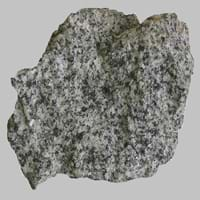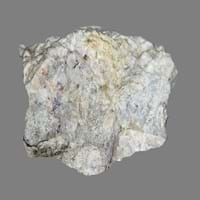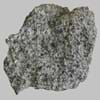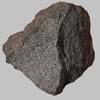Diorite and Skarn
Definition
Definition
Diorite is a grey to dark-grey intermediate intrusive igneous rock composed principally of plagioclase feldspar,biotite, hornblende, and pyroxene
Skarns are formed during regional or contact metamorphism and from a variety of metasomatic processes involving fluids of magmatic, metamorphic, and/or marine origin
History
Origin
Unknown
USA, Australia
Discoverer
Unknown
Tornebohm
Etymology
From early 19th century coined in French, formed irregularly from Greek diorizein distinguish
From an old Swedish mining term originally used to describe a type of silicate gangue or waste rock.
Class
Igneous Rocks
Metamorphic Rocks
Sub-Class
Durable Rock, Hard Rock
Durable Rock, Hard Rock
Family
Group
Plutonic
Not Applicable
Other Categories
Coarse Grained Rock, Medium Grained Rock, Opaque Rock
Fine Grained Rock, Opaque Rock
Texture
Texture
Phaneritic
Earthy, Mud-rich, Rough
Color
Black, Brown, Light to Dark Grey, White
Black, Brown, Colourless, Green, Grey, White
Maintenance
Less
Less
Durability
Durable
Durable
Water Resistant
No
Yes
Scratch Resistant
No
Yes
Stain Resistant
No
No
Wind Resistant
Yes
Yes
Acid Resistant
No
Yes
Appearance
Shiny
Dull
Uses
Architecture
Interior Uses
Decorative Aggregates, Interior Decoration
Decorative Aggregates, Entryways, Interior Decoration
Exterior Uses
As Building Stone, As Facing Stone, Garden Decoration
As Building Stone, As Facing Stone, Garden Decoration, Paving Stone
Other Architectural Uses
Curbing
Curbing
Industry
Construction Industry
As Dimension Stone, Cement Manufacture, Cobblestones, Construction Aggregate, for Road Aggregate
As a Flux in the Production of Steel and Pig Iron, As a Sintering Agent in Steel Industry to process Iron Ore, As Dimension Stone, Gold and Silver production, Manufacture of Magnesium and Dolomite Refractories
Medical Industry
Not Yet Used
Not Applicable
Antiquity Uses
Artifacts, Monuments, Sculpture, Small Figurines
Artifacts, Monuments, Sculpture
Other Uses
Commercial Uses
Creating Artwork, Curling
Creating Artwork, Gemstone, Jewelry, Metallurgical Flux, Source of Magnesia (MgO)
Types
Types
Not Available
Endoskarns
Features
Typically speckled black and white.
Host Rock for Lead, Zinc and Copper Deposits
Archaeological Significance
Monuments
Used
Used
Famous Monuments
Data Not Available
Data Not Available
Sculpture
Used
Used
Famous Sculptures
Data Not Available
Data Not Available
Pictographs
Not Used
Not Used
Petroglyphs
Not Used
Not Used
Figurines
Used
Used
Fossils
Absent
Absent
Formation
Formation
Diorite is a coarse-grained intrusive igneous rock which contains large interlocking and randomly oriented crystals and forms when molten lava does not reach the Earth’s surface and cools down in the Earth’s crust.
Due to change in environmental conditions, rocks are heated and pressurized deep inside the Earth's surface. Skarn is formed from the extreme heat caused by magma or by the intense collisions and friction of tectonic plates.
Composition
Mineral Content
Albite, Amphibole, Apatite, Biotite, Feldspar, Hornblade, Ilmenite, Magnetite, Muscovite or Illite, Olivine, Plagioclase, Pyroxene, Quartz, Sulfides, Titanite, Zircon
Calcite, Enstatite, Epidote, Garnet, Magnetite, Pyroxene, Titanite
Compound Content
Silicon Dioxide
Au, CaO, Carbon Dioxide, Cu, Fe, MgO
Transformation
Metamorphism
Yes
Yes
Types of Metamorphism
Cataclastic Metamorphism, Contact Metamorphism, Regional Metamorphism
Burial Metamorphism, Cataclastic Metamorphism, Contact Metamorphism, Hydrothermal Metamorphism, Impact Metamorphism, Regional Metamorphism
Weathering
Yes
No
Types of Weathering
Biological Weathering, Chemical Weathering, Mechanical Weathering
Not Applicable
Erosion
Yes
No
Types of Erosion
Chemical Erosion, Coastal Erosion, Water Erosion
Not Applicable
Properties
Physical Properties
Hardness
6-7
6.5
Grain Size
Medium to Coarse Grained
Fine Grained
Fracture
Not Available
Irregular
Streak
Bluish Black
Light to dark brown
Porosity
Very Less Porous
Less Porous
Luster
Shiny
Waxy and Dull
Compressive Strength
225.00 N/mm2
7
Not Available
Cleavage
Not Available
Slaty
Toughness
2.1
2.4
Specific Gravity
2.8-3
2.86
Transparency
Opaque
Opaque
Density
2.8-3 g/cm3
2.8-2.9 g/cm3
Thermal Properties
Specific Heat Capacity
Not Available
0.92 kJ/Kg K
10
Resistance
Heat Resistant, Pressure Resistant, Wear Resistant
Heat Resistant
Reserves
Deposits in Eastern Continents
Asia
Not Yet Found
China, India, Russia, Saudi Arabia, South Korea, Sri Lanka
Africa
Egypt
South Africa, Western Africa
Europe
Finland, Germany, Italy, Romania, Sweden, Turkey, United Kingdom
United Kingdom
Others
Not Yet Found
Not Yet Found
Deposits in Western Continents
North America
USA
Canada
South America
Argentina, Bolivia, Chile, Colombia, Ecuador, Peru
Brazil, Colombia, Paraguay
Deposits in Oceania Continent
Australia
New Zealand, Western Australia
Central Australia, Western Australia
All about Diorite and Skarn Properties
Know all about Diorite and Skarn properties here. All properties of rocks are important as they define the type of rock and its application. Diorite belongs to Igneous Rocks while Skarn belongs to Metamorphic Rocks.Texture of Diorite is Phaneritic whereas that of Skarn is Earthy, Mud-rich, Rough. Diorite appears Shiny and Skarn appears Dull. The luster of Diorite is shiny while that of Skarn is waxy and dull. Diorite is available in black, brown, light to dark grey, white colors whereas Skarn is available in black, brown, colourless, green, grey, white colors. The commercial uses of Diorite are creating artwork, curling and that of Skarn are creating artwork, gemstone, jewelry, metallurgical flux, source of magnesia (mgo).
|
||
|
||
|
|
||
|
||
|










